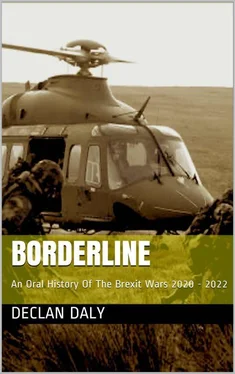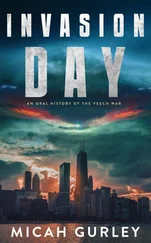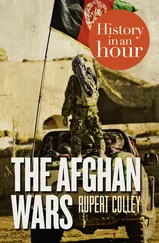Lt Jeanne ‘Costa’ Delaney
‘The name Costa? That’s Rover’s fault. Actually, that’s not entirely true. We were still Cadets so we were all idiots in the ways of the world. Rover's just stuck with that as a life plan longer than most. No, we all wanted cool sounding personal callsigns, just like the movies. ( Authors note: Lt Delaney is facepalming and clearly embarassed by this ). The boss, Comdt Mulvey, said this was fine but that he had the final call on each name. He knew what he was doing, everyone in the Defence Forces has a nickname and none of them are complimentary. Anyone who thought they were going to be called Maverick was in for a disappointment.
Anyway, in the tv series Battlestar Galactica, the female fighter pilot was called Starbuck. I thought this was definitely something I could live with when it was suggested, by Rover of course, but the boss instantly shot it down and came back with Costa. So since then and presumably until the day I die, I will be putting up with jokes about cappucinos, suggestions about giant coffee cup Halloween costumes and someone recently drunkenly told my fiance that when we get married he couldn’t change that name. Yeah, that was Rover too.
Ask him about his name. He’s got a few good stories about it, but the truth is, when we initially flew into Stockholm, he sat beside the boss. We asked him, the Comdt, how his flight was when we landed, you know, basic nervous cadet shit talk around a senior officer and he said it was ‘like sitting next to a yelping labrador puppy for the whole fucking flight’ and then stalked off to the baggage area. So regardless of what he tells ya, thats where ‘Rover’ came from.
For us, I guess we missed most of the war and everything that went with it. We were away from 2020 on, and not just away we were on an intense course of academics and flying. We stayed in touch with family and friends of course, and we got home for Denny Ratigans funeral for a few days, but we were really immersed in our own little world. We had flown PC – 9s at home to solo stage and instrument flying stage but before we went further than that, we were scooted off to Sweden for the SK60 Lead in Fighter course. The SK60 is a side by side jet trainer that they use before going onto fly fighters, they actually do their basic course on it too. We were one of the last classes to fly it, they’ll go straight from basic to Gripens now, which will suit the Air Corps group that are on the basic course now. When we went out, the plan was that we would do the LIFT, Lead In Fighter Training, course and then conversion and operational training on the Gripen.
We’re only doing the air to air stage of the course, the next few classes will do the multirole stuff, ground attack and recconnasiance, that kind of thing and we’ll do it in modules at home. But the whole point is to have an interceptor capability for air policing and I think they want at least some of us back before the French get sick of it and pull out. A bit of overlap means we’ll get to fly with them in mixed formations for a while to learn a bit more from their experience. At least that’s the plan for now anyway.’
◆◆◆
No 2 Operations Wing had previously operated Cessna aircraft from Gormanston before both the wing and Gormanston aerodrome itself were shuttered. Reactivated to take in the Gripen fighters that had been leased, it would soon be headquartered and based in Baldonnel with a permanent QRA detachment in Shannon. Similar to the other Wings, there was an operational Squadron – 201, a planned second squadron – 202 be based in Shannon, and a squadron of technicians and engineers 203 Sqaudron, along with the Wing HQ. The new wing and it’s staff had spent the better part of two years training in Sweden to make the re-introduction of fighter jets, the first since the Vampires (the Fouga Magisters that replaced them were training aircraft), a success. While they would certainly be busy with the air policing role they expected, it was in an entirely different type battle that they would make Irish history with the first Irish Air Corps combat action against ground forces since the Civil War.
◆◆◆
QRA: Unhappy coincidences
May 2022
100 miles West of Galway
Lt Col Christian eased back on the single throttle lever that controlled both engines on his Rafale fighter jet and slipped backwards relative to the KC 135 tanker he was refuelling from. As he disconnected, he considered that his quarry today dated from the same bygone era as the flying petrol station keeping him topped up. With a quick hand wave at his wingman who was disconnecting from the hose on the other wing of the old airliner turned tanker, he brought his aircraft around to the west and throttled up again. It wasn’t like the Bear would out run him, but the longer he could annoy them the better.
The Irish detachment had not been bad for his squadron, it was already set up when they arrived two months ago on their second rotation, most of his pilots had been here before already. That meant it was a nice easy work up for the new ones, finding their way in a real operation for the first time. And real it certainly was. Whereas QRA in France might launch occasionally for a stray airliner who’d lost radio contact, here they were airborne almost every shift dealing with Russian incursions.
They typically came in three types, one was the cargo aircraft snooping around the northwest to drop arms when they got the chance, the second was ‘routine’ Russian ops – the normal runs through the Atlantic that they made to test NATOs; and now Ireland’s, QRA response. Today was almost certainly the third kind. A TU 142 Bear F. A coldwar relic that was still a very capable maritime patrol aircraft. The TU 142 was modeled on the TU 95 Bear bomber, which was itself derived from the TU 4 Bull – a rivet for rivet copy of the American B 29 that bombed Hirsohima and Nagasaki. So its lineage was distinguished, but these days it was serving a very different purpose. Marpat – maritime patrol.
In these days of ‘everyone knows but no one can prove it’ shadow play, the Bears were marpatting for the fleet of civilian registered Russian trawlers that were feeding weapons into the war in Ireland; whenever the attention on airdrops came too close to the bubbling over into a realworld problem. They would fly down the coast as far as South West of Kerry, swing around and head back up again. All the time, the were constantly scanning and sweeping electronically for any naval vessels, be they Irish, UK or EU that might interfere with their landing operations. This one was on the way back North. They were taking over from the previous flight of Rafales that had launched to intercept over an hour ago. Even with three external fuel tanks they were sucking gas at a prodigous rate to close the distance and the tanker took off from Shannon soon after the first wave. Lt Col Christians’ jets had overhauled the tanker at a leisurely fuel conserving rate, and had just topped up the tanks to allow them to stay with the Bear for as long as they could. The first wave would be thirsty by now, so he came up on the squadron chat frequency for a handover.
“Bonsoir chief, one Bear F as advertised, on my squawk, heading 010 degrees, 380kts FL 300. He’s trailing a comms antennae so keep clear across his six.’ He responded to the first waves update with two clicks of his own radio, no point giving away more than you had to, when the Russians were undoubtedly trying to listen, encryption or not. The message had told him the big turboprop was being formated on by the first wave and he should track their transpdonder for the location as the Bear didn’t have his switched on. This saved him turning on his radar, more electrons saved from observation. The rest told him the Bear was heading just east of north at 380 nautical miles an hour at 30,000 feet. The remark about the comms antennae told him that the Russians were trailing a long cable used to communicate with submarines, for several kilometres behind him. At this height and speed, that was more about pissing off the French pilots who had to avoid a nearly invisible wire saw in the sky, rather than any real attempt at communicating with anyone.
Читать дальше












